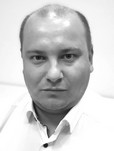Optimal test algorithm to help identify most promising sport discipline
Фотографии:
ˑ:
A.V. Nazarov1
D.V. Lezov1
V.V. Danilov1
Dr.Hab., Professor V.P. Guba2
1 'BECOME A CHAMPION' autonomous non-profit organization, Moscow
2Russian State University of Physical Education, Sports, Youth and Tourism (SCOLIPE), Moscow
The problem of assessing the capabilities and abilities of an individual and his predisposition to various sports is considered in the paper. As an informative system for determining a child for a chosen sport, tests are considered, with the help of which an effective determination of the psychophysiological and functional capabilities of the body, as well as anthropological and sports parameters of the body is provided.The study was conducted in 2018/2019 on the basis of the "BECOME A CHAMPION" Autonomous non-profit sports and fitness organization. In the process of comprehensive research, as of September 1, 2019, 12,922 children aged 6 to 12 years were tested in 8 subjects of the Russian Federation (Kaliningrad Region, Krasnodar Territory, Rostov Region, Moscow Region, St. Petersburg, Samara region, Omsk region and Primorsky Territory). The career guidance of children in sports was determined during testing by determining the psychophysiological and functional capabilities of the body, as well as anthropological and sports research. The final stage of the comprehensive testing was the formulation of the conclusion - a recommendation on the choice of sports.
Based on the study, the authors conclude that due to innate morphofunctional qualities, physical activity of a person is possible, however, success in the training and competitive process is characterized not only by the athlete's genetic potential. Often less talented and talented athletes, but methodically and systematically striving for excellence thanks to the competent work of the coaching staff, take places on the podium higher than more capable rivals.
Keywords: individual, selected sport, optimization of testing process, testing algorithm, integrated control.
References
- Ashmarin B.A. Teoriya i metodika pedagogicheskih issledovaniy v fizicheskom vospitanii [Theory and methodology of pedagogical research in physical education]. M.: Fizkultura i sport, 1978. 223 p.
- Blagush P.K. teorii testirovaniya dvigatelnyih sposobnostey [Motor abilities testing theory]. M.: Fizkultura i sport, 1982. 165 p.
- Godik M.A. Sportivnaya metrologiya [Sports metrology]. Textbook. M.: Fizkultura i sport, 1988. 192 p.
- Guba V.P. , Solodnikov A.V. Detskaya odarennost i talant: integralnaya otsenka, analiz diagnosticheskih metodov [Children's endowments and talent: integrated assessment, analysis of diagnostic methods]. Izvestiya Rossiyskoy akademii obrazovaniya, Scientific journal. 2015. no. 3 (35). pp. 71-78.
- Guba V.P. Detsko-yunosheskiy sport: osnovyi tehnologii kachestva nauchnyih issledovaniy i protsessa podgotovki [Children's and youth sports: basics of training process quality assurance technology and research]. Teoriya i praktika fiz. kultury. 2017. no. 8. pp. 21-25.
- Guba, V.P., Shestakov M.P., Bubnov N.B., Borisenkov M.P. Izmereniya i vyichisleniya v sportivno-pedagogicheskoy praktike [Measurements and calculations in sports student teaching]. Study guide. M.: SportAkademPress, 2002. 211 p.
- Guba V.P., Solodnikov A.V. Mezhdistsiplinarnaya metodika diagnostiki detskoy odarennosti k sportivnoy deyatelnosti [Interdisciplinary methodology for diagnosing children's endowments in sports activities]. Teoriya i praktika fiz. kultury. 2017. no. 4. P. 104.
- Zatsiorskiy V.M. Osnovy sportivnoy metrologii [Fundamentals of sports metrology]. M.: Fizkultura i sport, 1982. 254 p.
- Landa B.Kh. Metodika kompleksnoy otsenki fizicheskogo razvitiya i fizicheskoy podgotovlennosti (Technique of complex estimation of physical development and physical training]. Tutorial. M.: Sovetskiy sport, 2008. 244 p.
- Lyakh V.I. Testy v fizicheskom vospitanii shkolnikov [Tests in the physical education of schoolchildren]. Teacher's manual. Moscow: AST publ., 1998, 272 p.


